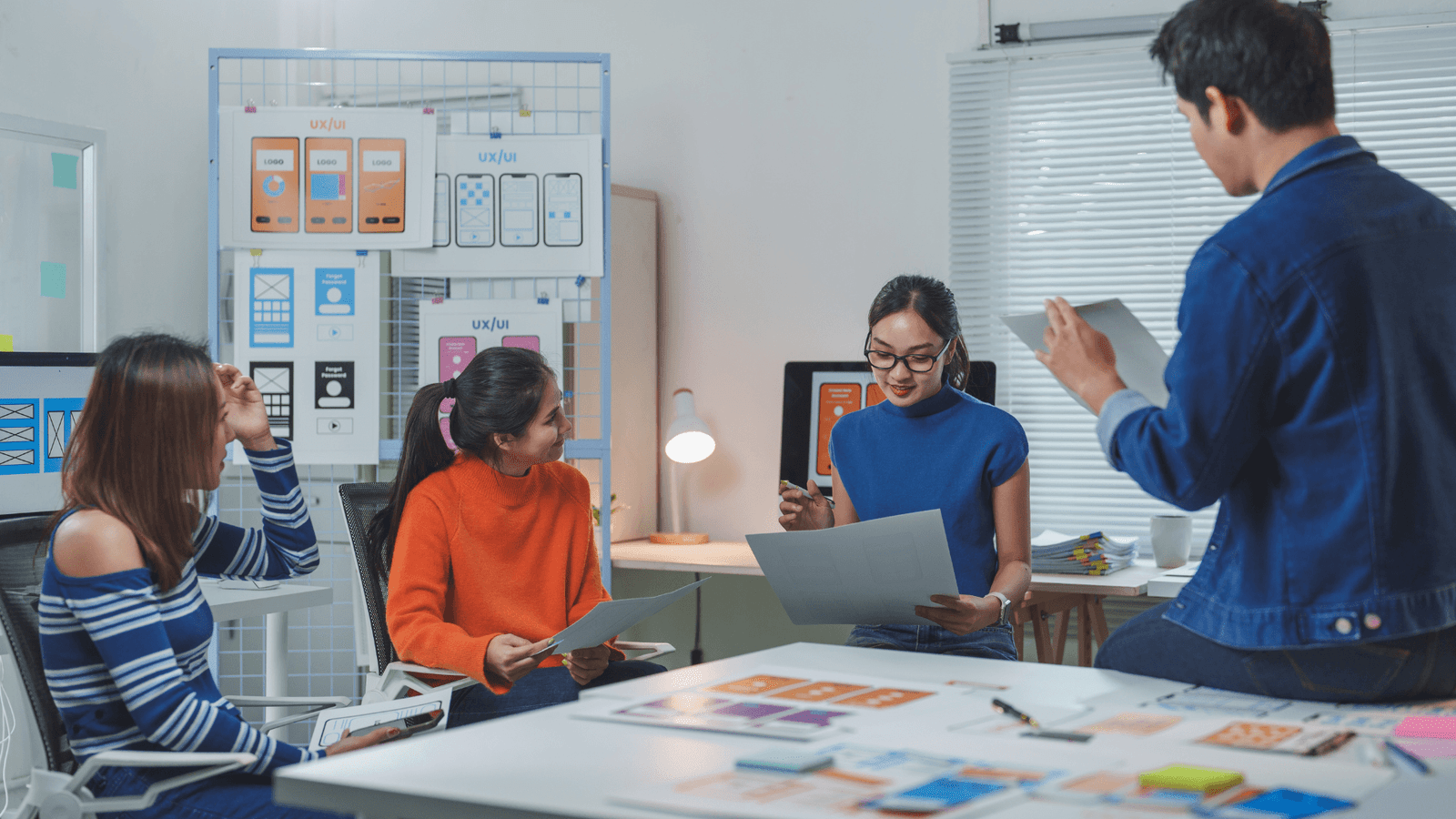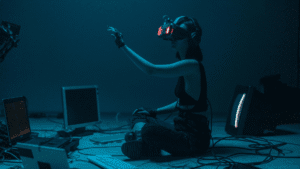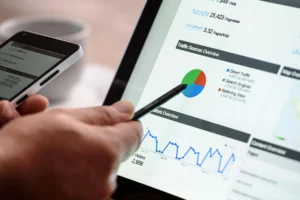Nowadays, users have infinite options just a click away, the UX/UI design has become the determining factor between the success and failure of a website. It is not enough to have a functional website; it is essential to create an experience that connects, inspires trust and naturally guides the user towards their goals.
The user-centered design is not just a trend, it is a strategic necessity that directly impacts visitor retention, conversions and ultimately your business' bottom line.
What is UX/UI design and why is it crucial for your business?
Understanding UX design
UX (User Experience) refers to the entire experience a user has when interacting with your website. It covers from the first moment they arrive at your page until they complete a specific action or leave the site. The UX design focuses on understanding user needs, motivations and behaviors to create seamless, intuitive and satisfying experiences.
A user experience successful considers aspects such as:
- Ease of finding information
- Site loading speed
- Clarity in navigation
- Accessibility on different devices
- The logical flow between pages
- Emotional satisfaction of the user
UI design makes the user experience tangible
UI (User Interface) is the visual and interactive part with which the user has direct contact. It includes elements such as buttons, menus, forms, typography, colors and all the visual components that facilitate interaction. UI design translates the UX strategy into concrete and attractive elements that guide the user in an intuitive way.
The visual identity and the branding are seamlessly integrated into the UI design, creating a cohesive experience that reinforces your brand's personality at every touch point.
The impact of UX/UI design on business results
Companies that invest in web design user-centric solutions achieve impressive returns:
- A UX design optimized can increase the conversion up to a 400%
- 88% of users will not return to a website after a bad experience
- Every dollar invested in UX can generate a return of 100%
- Sites with responsive design have 67%more likely to generate conversions
How does it impact key metrics?
Reduced bounce rate:A design UX/UI well executed keeps users longer on your site, exploring different sections and content.
Longer dwell time:When users easily find what they are looking for and enjoy the experience, they stay longer, which improves your SEO positioning.
Increase in conversions: A user-centered design eliminates friction in the purchase or contact process, making it easier for visitors to become customers.
Improved ROI:By optimizing every element of the experience, you maximize the value of each visitor who comes to your site.
Fundamental principles of user-centered design
User research and understanding
Before designing any element, it is crucial to thoroughly understand your target audience. This includes:
Demographic and psychographic analysis:Know the age, location, interests, educational level and behaviors of your ideal users.
Customer journey mapping:Document every step a user follows from the moment they discover your brand until they become a loyal customer.
Identification of pain points:Detect the obstacles or frustrations that users experience in their current interaction with your site.
2. Clear information architecture
The organization of content should follow an intuitive logic that allows users to quickly find what they are looking for:
Clear visual hierarchy:Use sizes, colors and spacing to guide the user's attention to the most important elements.
Intuitive navigation:Create menus and links that are easy to understand and follow, regardless of the user's technical level.
Logical categorization:Group related content in a way that makes sense to the end user, not to the internal structure of the company.
3. Responsive and adaptable design
In today's mobile era, the responsive design is not optional. Your site must offer an exceptional experience in:
Smartphones:Optimized for small screens with intuitive touch navigation.
Tablets: Use of the space in between with adaptive layouts.
Desk:Maximization of available space without overwhelming the user.
Emerging devices: Preparation for new technologies and screen sizes.
Key elements of effective UX/UI design
Visual design that connects
Strategic color paletteColors should not only be attractive, but should also communicate specific emotions and reinforce your branding. For example, blue conveys confidence and professionalism, while orange generates urgency and action.
Legible and hierarchical typography:Font choice should prioritize readability on all devices, using different weights and sizes to create a clear visual hierarchy.
Effective blanks:Negative space is not wasted space; it is a powerful tool for directing attention and creating a clean, professional design.
Intuitive interactions
Microinteractions:Animations and visual responses that confirm the user's actions and make the experience more satisfying.
Immediate feedback:Ensure that each user action receives a clear response, whether visual, auditory or tactile.
States of elements:Buttons that change appearance when you hover the cursor over them, forms that indicate errors in real time, etc.
Speed optimization
Optimized images:Use appropriate formats and intelligent compression to reduce loading times without sacrificing visual quality.
Clean code:Minimize unnecessary CSS and JavaScript that may be slowing down your site.
Adequate hosting:Choose a hosting provider that guarantees fast response times and high availability.
Practical strategies for UX/UI implementation
Testing and continuous validation
A/B Testing:Compare different versions of key elements such as buttons, forms or landing pages to identify which generates better results.
Heatmaps and behavioral analysis:Use tools such as Hotjar or Crazy Egg to visualize how users actually interact with your site.
Direct feedback:Implement short surveys or rating systems to obtain direct feedback from users.
Data-driven iteration
The UX/UI design cash is never "finished". It must constantly evolve based on:
Performance metrics:Analyze conversion rates, time on page, pages per session and other relevant KPIs.
Changes in user behavior:Adapt to new trends, technologies and user expectations.
Business feedback: Integrate new business objectives and market opportunities into the design.
Success stories: Real transformations
Ricardo Escotto: Taking an elite driver's brand beyond the track
Ricardo EscottoThe talented Mexican driver, who competes in Indy NXT, needed a digital platform that would reflect his professionalism and attract potential sponsors.
The challenge:To create a web presence that effectively communicates its sporting achievements and facilitates contact with sponsors and the media.
Service implemented: Web design and development using WordPress as a base platform, optimized for performance and scalability.
The vision of the project:This project was born from the shared passion between Ricardo and his followers for the excitement of each race. With an elegant aesthetic that incorporates moving details, the site goes beyond simple information: it connects emotionally with sponsors, media and fans, inviting them to be part of the adventure.
The UX/UI solution:Design focused on visual storytelling and emotional connection, intuitive navigation for different audiences (fans, sponsors, media), and optimization for mobile devices considering that many fans follow the races from their phones.
Key elements implemented:
- Visual identity consistent with its branding staff
- Dynamic micro-interactions that evoke the speed and excitement of racing.
- Interactive timeline of achievements and sports career developed in WordPress
- Multimedia gallery optimized to show highlights
- Specialized contact section for business opportunities and alliances
- Responsive design for real-time tracking from the circuit
- Intuitive CMS that allows for quick updates of results and news
Chosen technology:WordPress was selected for its flexibility for dynamic content management, ideal for a driver who needs to constantly update results, race calendar and sponsor news.
Results:The result is a robust and versatile platform, which strengthens Ricardo Escotto's personal brand and opens the door to new partnership opportunities in the motorsports industry. Significant increase in sponsorship inquiries, better media positioning, and a digital experience that invites sponsors and fans to be part of his professional career.
See complete case:Ricardo Escotto - Keycode Portfolio
Current trends in UX/UI
Inclusive design and accessibility
Modern design must be accessible to users with different abilities:
- Adequate contrast:Ensure that the text is legible for the visually impaired.
- Keyboard navigation:Allow all elements to be accessible without using a mouse.
- Alternative texts:Describing images for users who use screen readers.
Intelligent customization
- Dynamic content:Display relevant information based on the user's previous behavior.
- Automatic recommendations:Suggest products or services related to demonstrated interests.
- Adaptive interfaces: Designs that automatically adjust to the user's preferences.
Sophisticated microinteractions
- Purposeful animations:Transitions that guide attention and communicate system status.
- Subtle gamification:Elements that make the experience more engaging without being intrusive.
- Contextual feedback:System responses that are adapted to the specific context of each action.
The UX/UI design Cash is not an expense, it is a strategic investment that directly impacts the growth of your business. From improving customer satisfaction, to increasing conversions and strengthening your branding, each element of the user experience contributes to commercial success.
In today's marketplace, companies that prioritize the user experience not only retain their current customers better, but also attract new users through recommendations and a solid reputation.
The user-centered design requires expertise, specialized tools and a methodological approach that balances business objectives with real user needs. For this reason, many successful companies choose to work with an agency of web design ux that can guide the entire optimization process.
Ready to transform your website?
If your website is not generating the results you expect, or if you simply want to take your users' experience to new heights, it's time to act.
Request your free UX/UI design audit and find out exactly what is limiting your website's potential. Our team of experts will analyze your current site and provide you with a detailed report with specific recommendations to improve your site. web design and maximize your conversions.
Don't let a bad user experience limit the growth of your business. Request your free audit now!
Written by Barbara Cabrera| Keycode Digital Agency




